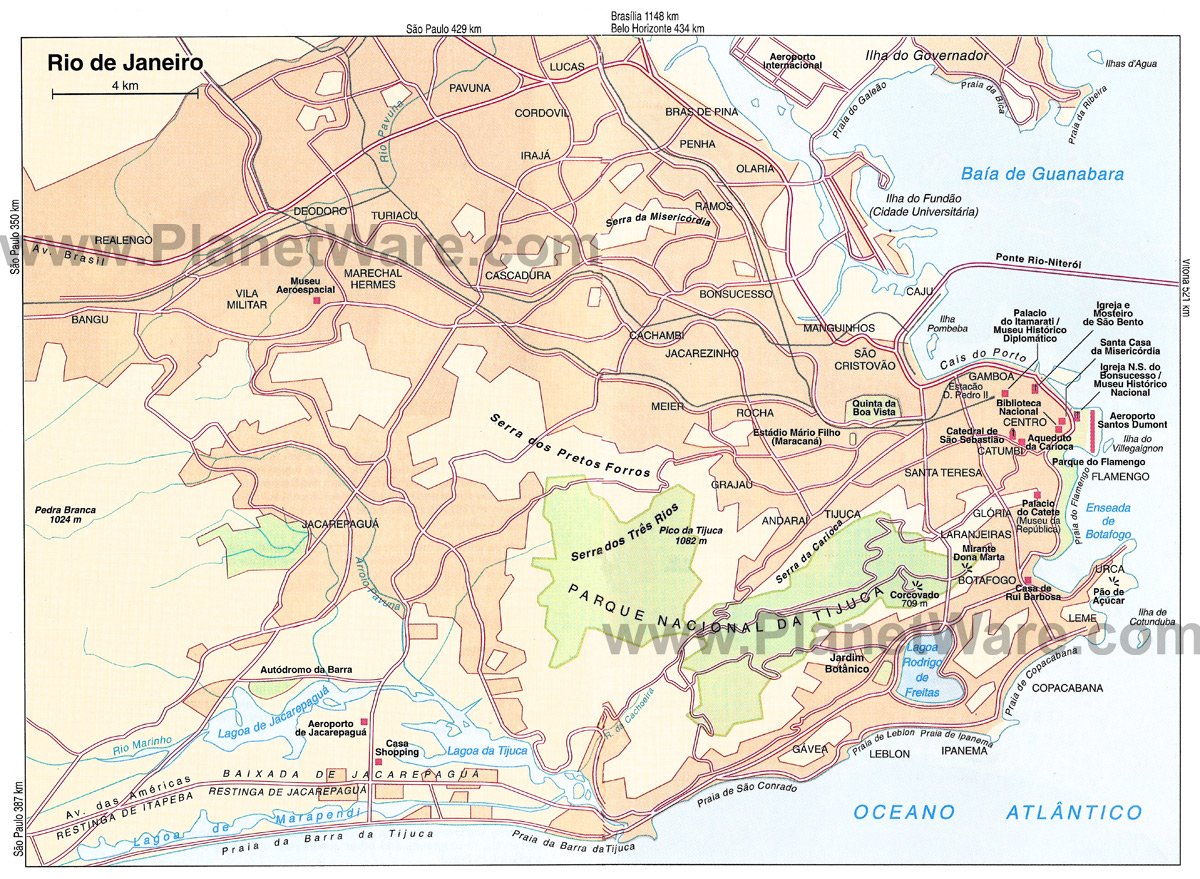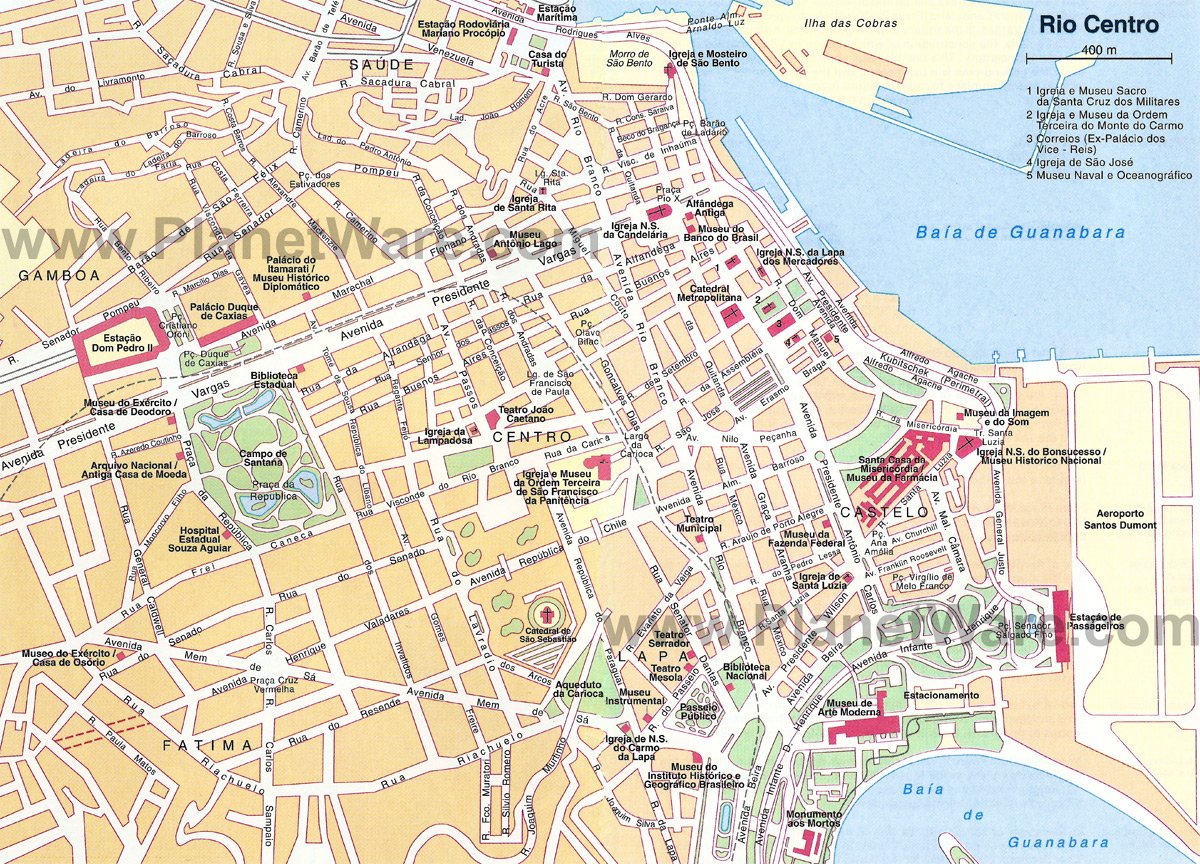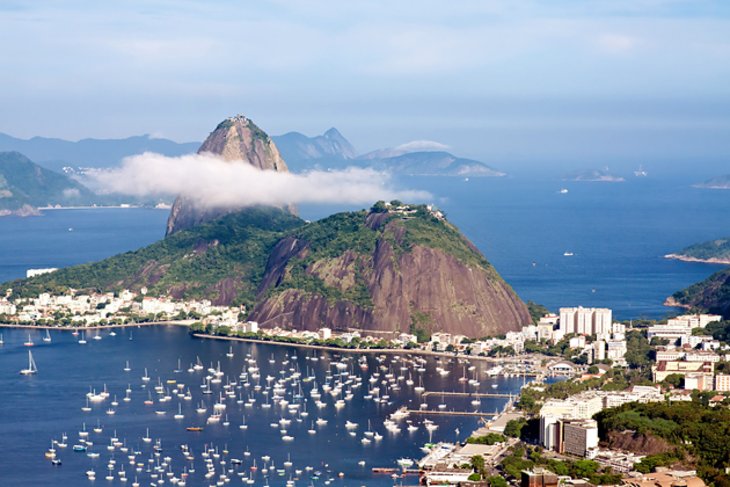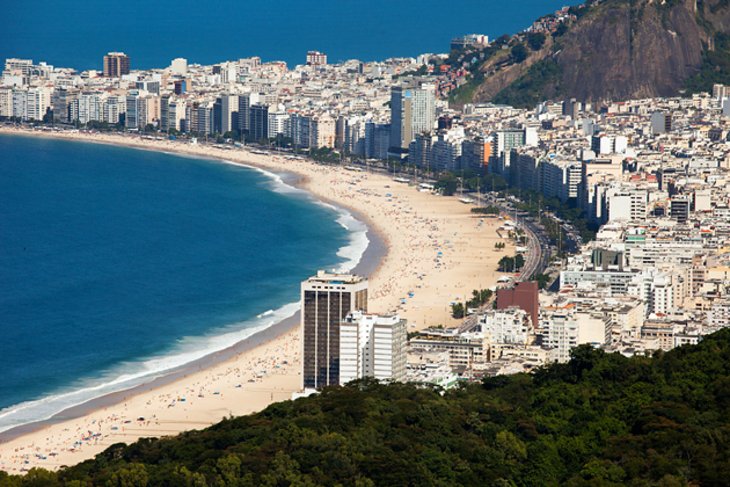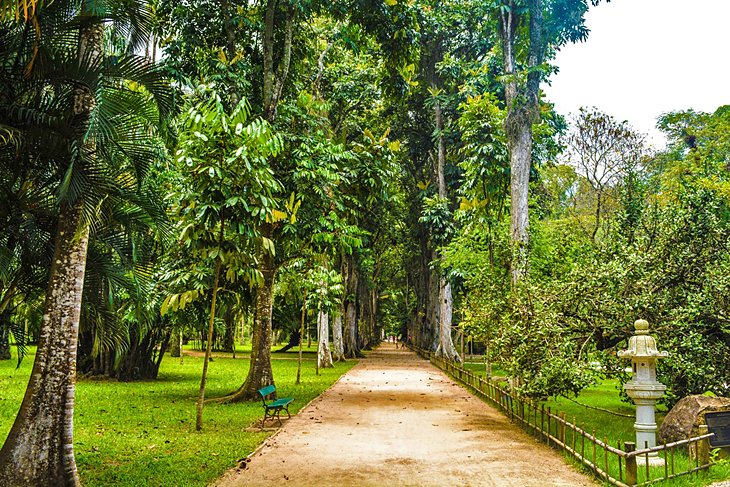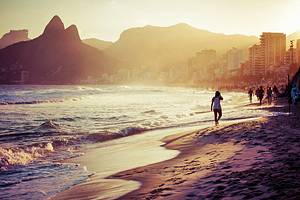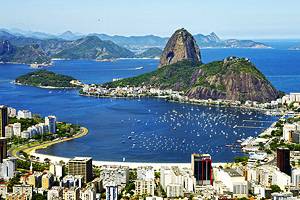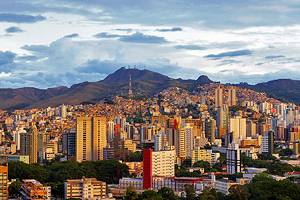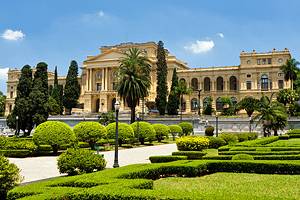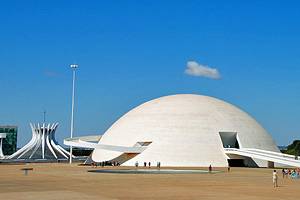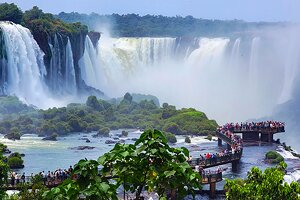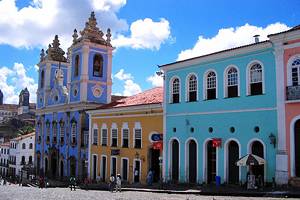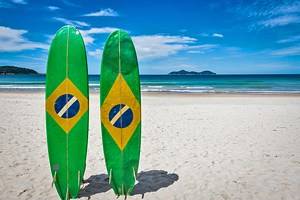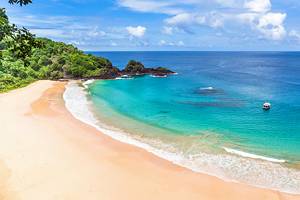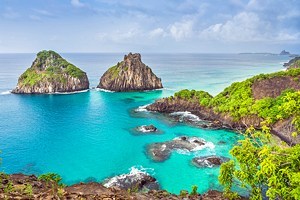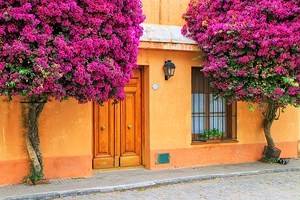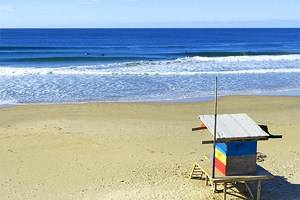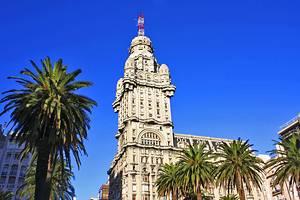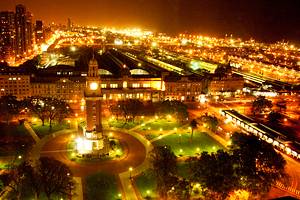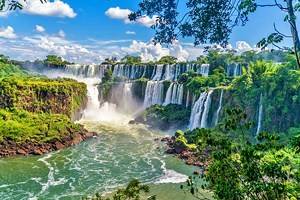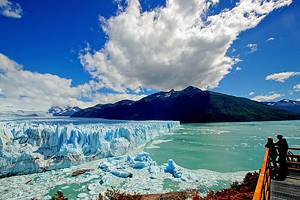Tourist Attractions in Rio de Janeiro
The city of Rio de Janeiro, with its evocative name, brings to mind golden sand beaches populated by sun-kissed bodies by day and the passion of the samba by night. Many people consider this to be the most beautiful city setting in the world, and UNESCO cited "the staggeringly beautiful location for one of the world's biggest cities" in naming Rio a World Heritage Site.
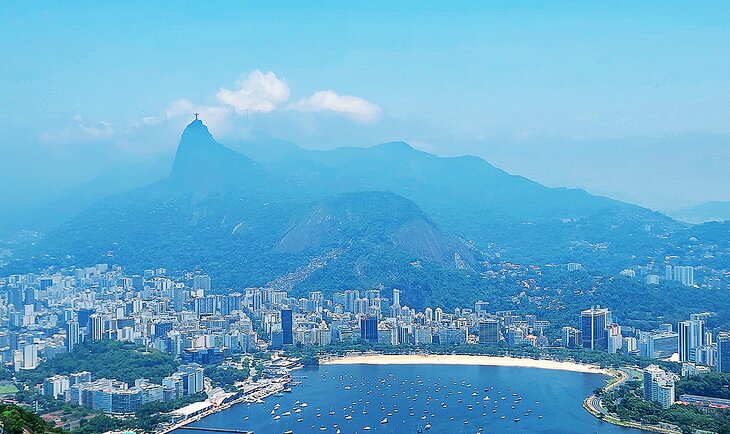
The best way to appreciate Rio is to rush headlong into the experiences and attractions with passion and gusto. Corcovado, Sugarloaf, Copacabana, and Ipanema are the top places to start but there are many must-see places. When you're done touring the sites, hit the beach, and then head out in the evening for first-class dining, to see a football game, or to enjoy the nightlife.
Discover the best this city offers with our list of the top attractions in Rio de Janeiro.
Christ the Redeemer (Cristo Redentor)
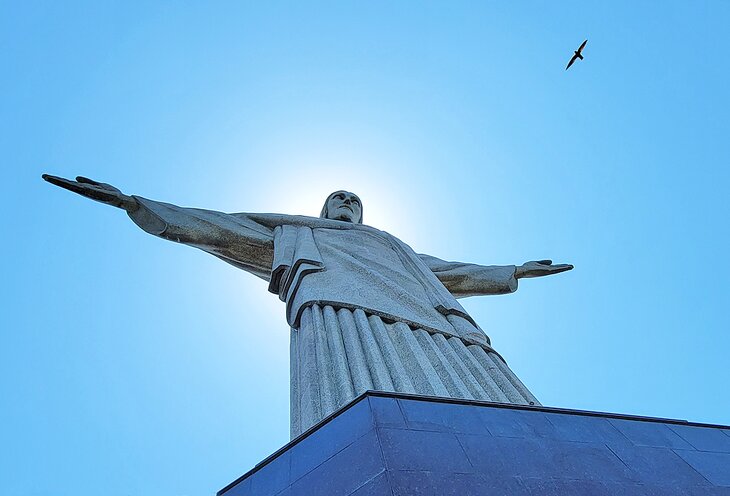
Towering over the city with its welcoming arms, the Christ the Redeemer statue is the iconic symbol of Rio de Janeiro and it's something you must visit while you're here. Set atop 709 meter-high Corcovado Mountain, this monument has been watching over the city for nearly 100 years.
Views from the deck below the 30-meter-high monument out over the city, ocean, and surrounding mountains are incredible on a clear day.
For the famous shot of yourself in front of the statue, walk about halfway down the stairs to the lower deck and shoot backward towards the statue.
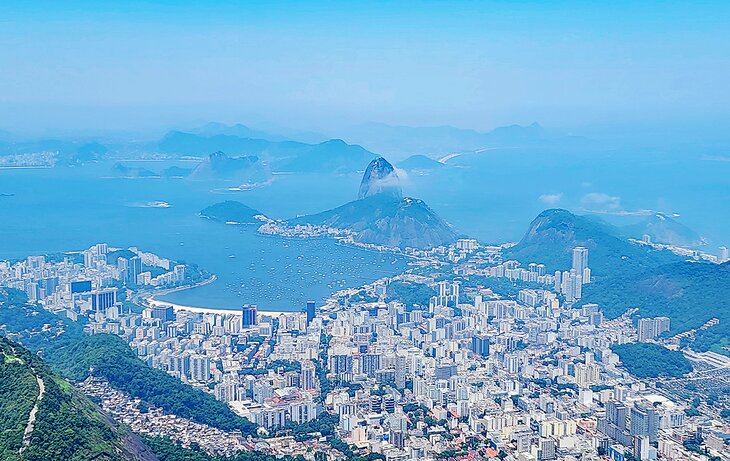
Visiting Christ the Redeemer isn't all about views and selfies, the ride up to the top on the incline railway is half the fun. Ascending through the lush jungle, the steep ride to the top takes about 20 minutes and provides beautiful views.
Visiting Christ the Redeemer is one of the most popular things to do in Rio de Janeiro, with over 800,000 people visiting annually. Be prepared for crowds at the top. To avoid long queues for the train, book your tickets in advance online and select a time. Another option for getting to the top is taking a van ride, which is cheaper but far less scenic and enjoyable.
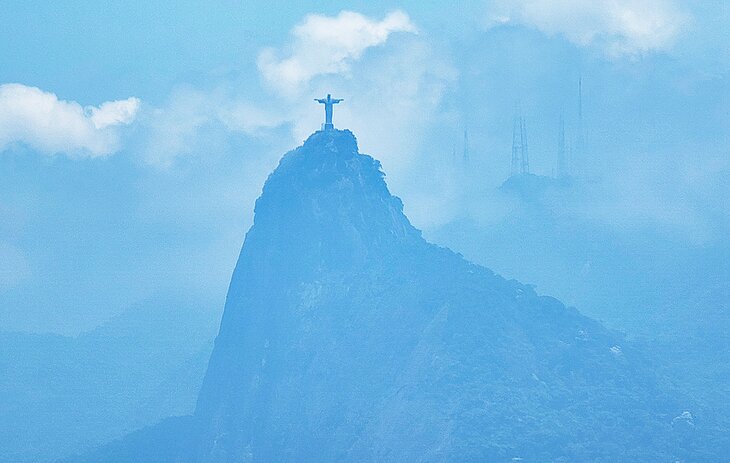
The best time to visit is early in the day, as the statue can become foggy as the day progresses.
Note: The former restaurant at the top is permanently closed; the only food and drink option is a small snack bar, although there are plenty of places to buy souvenirs!
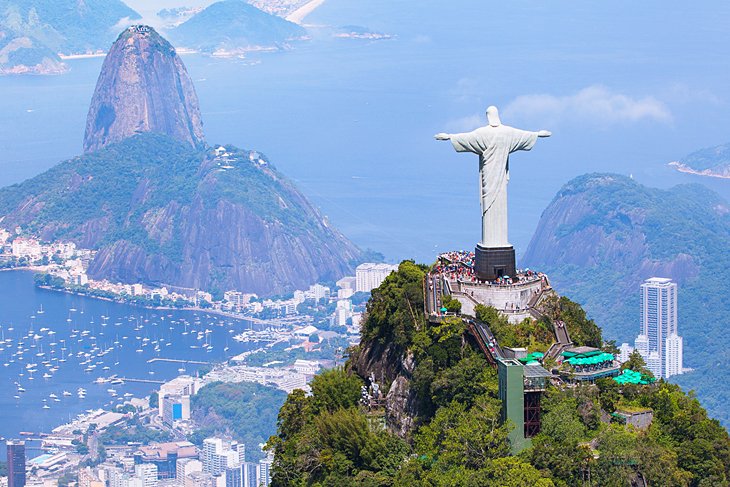
Sugarloaf
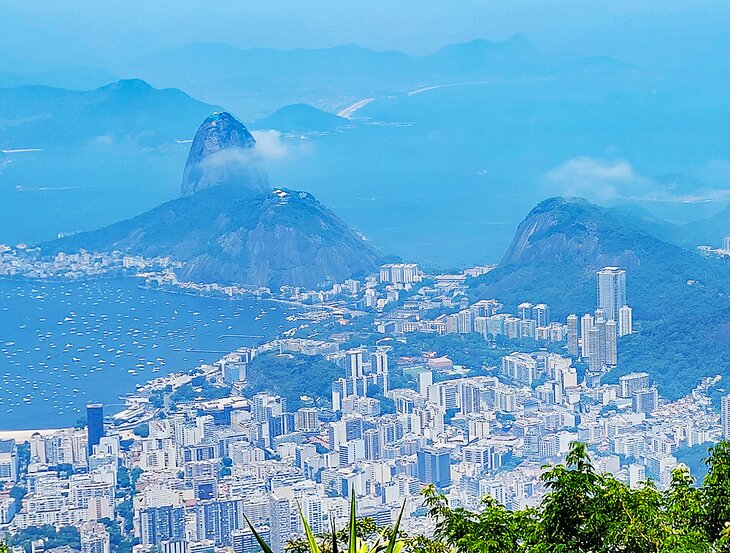
It's hard to imagine a more perfectly placed mountain than Sugarloaf. Just slightly offshore from mainland Rio de Janeiro, this towering monolith provides sweeping views of the city and across to Christ the Redeemer. At the top, you'll find multiple viewing platforms, most of which are protected from the punishing equatorial sun. Views also extend to Rio's famed harbor with the Ponte Pres. Costa e Silva bridge in the foreground and back towards Copacabana and Christ the Redeemer.
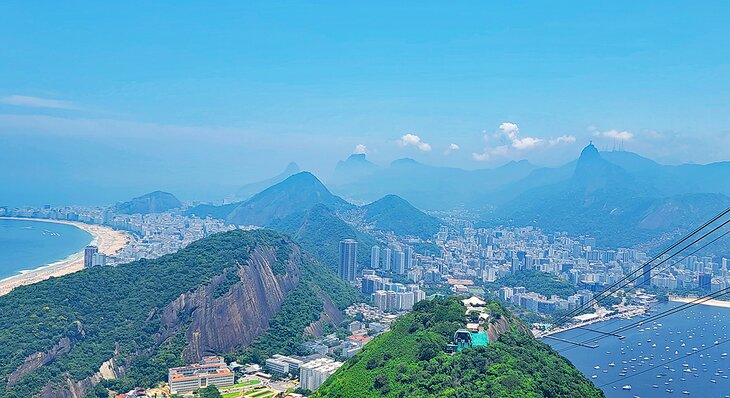
The ride to the top of Sugarloaf Mountain is via a scenic two-stage cable car ride. Don't be distracted by the first stopping area with its shopping mall; the best views are from the top. As you exit the first station, just keep walking to your left and you'll eventually find the second station. The ride up from here is stunning, keep an eye out below for mountain climbers ascending the sheer face of the mountain.
As with Christ the Redeemer, lines can be long, so book your tickets in advance. You can book for specific days but not times. The best option, if you don't mind paying a little more, is to buy the VIP ticket which allows you to skip the lines on the way up and down (surprisingly you need to show your ticket to get down). This is an excellent investment!
The attraction is also known as Pão de açúcar when searching for the drop-off point using UBER.
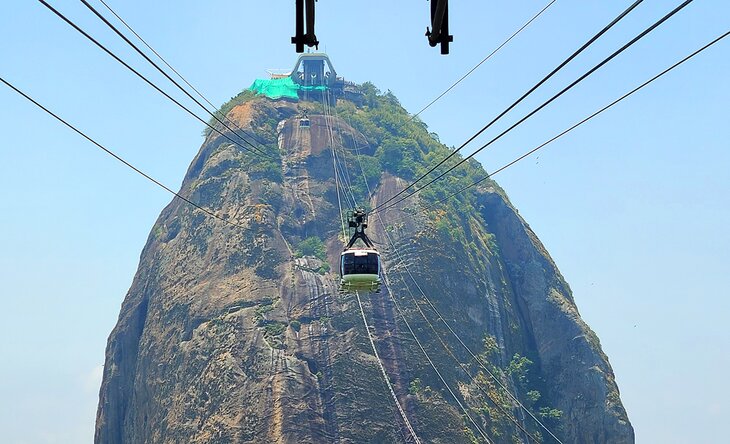
Copacabana
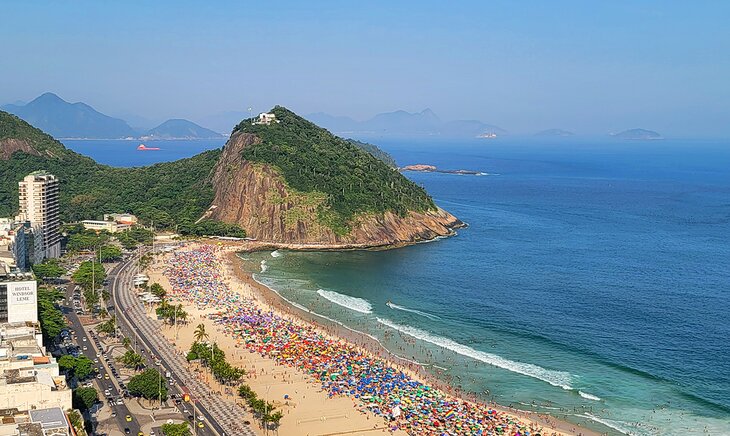
This 2.5-mile stretch of golden sand is synonymous with Rio de Janeiro. Packed with people on warm summer weekends and throughout the Christmas holidays, it's a lively and fun scene and the beach where people from all walks of life come for sun, surf, and fun. The beach is wide, so be prepared for a significant walk to the water's edge.
The water is refreshingly cool and the waves can be surprisingly large depending on the day. Rio does a good job of keeping people on the beach safe, don't be surprised if you see a red helicopter doing water rescues if the surf is up. Chairs and umbrellas can be rented for a reasonable fee from organized beach service operators, who also provide cold drinks and meals. They also provide free showers.
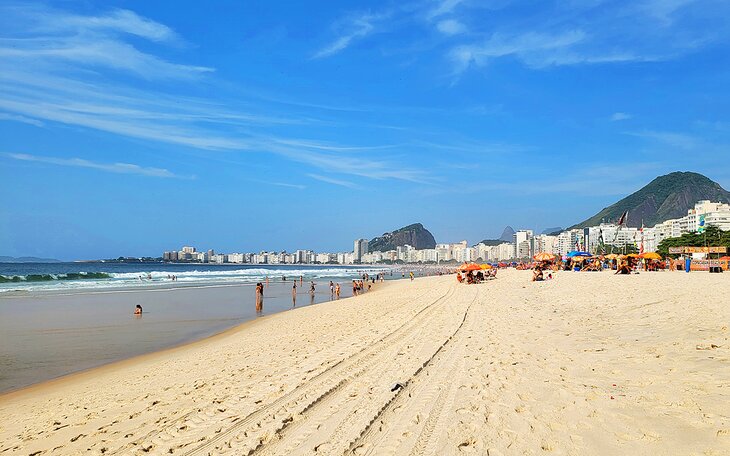
Back from the beach is a wide walkway with black and white stones arranged in a decorative pattern. Here, you'll also find beachside restaurants and, in the evening, vendors selling all manner of handicrafts and souvenirs. At the far northern end of the beach are restaurants, many with live music, clustered under the large headland. Be sure to plan to come here in the early evening. It is an excellent spot to enjoy the sunset with expansive views of the beach.
If you can tear yourself from your towel, the early 18th century Fort Copacabana and Military Museum at the south end of the beach is worth a look.
Note: The mood on Copacabana Beach varies. It's generally very family-oriented on weekends and holidays during the day. Night on the beach can be rowdy at times, especially on holidays in the late evening. Normal weekdays are much quieter.
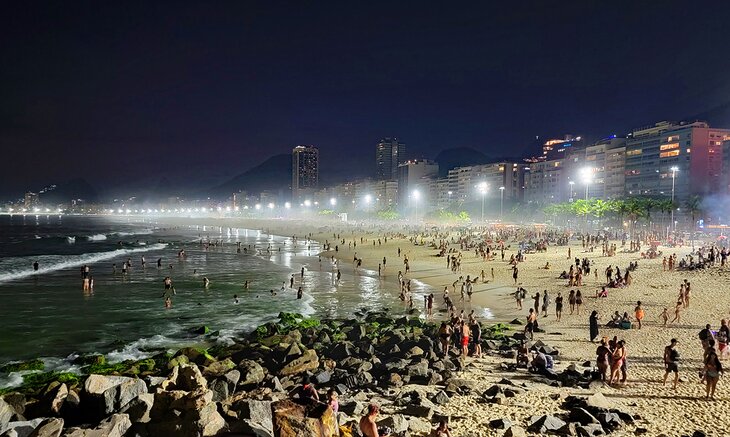
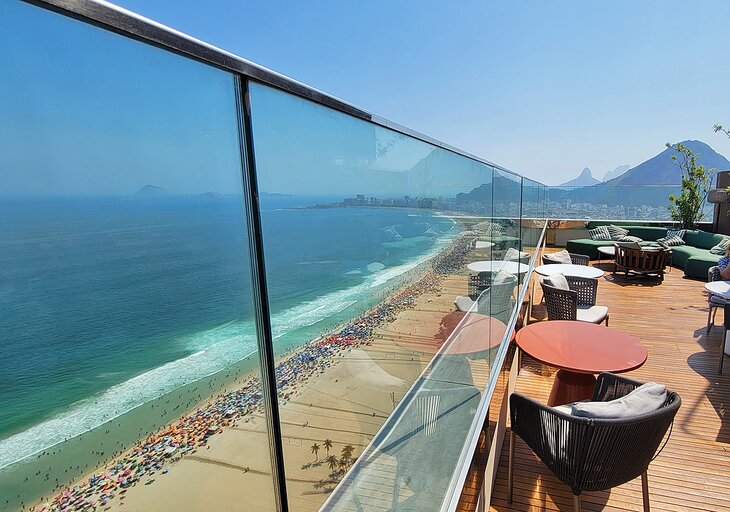
Address: Praça Coronel Eugênio Franco, Rio de Janeiro
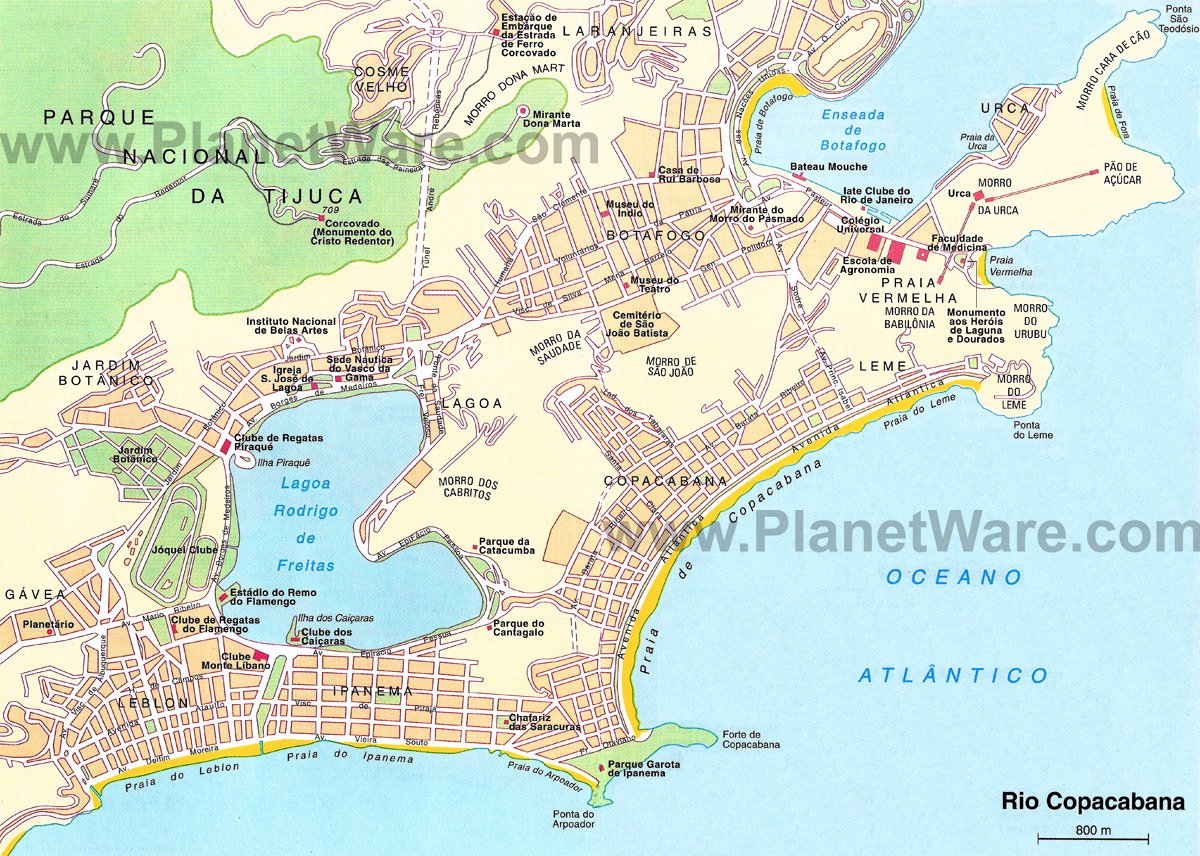
Ipanema
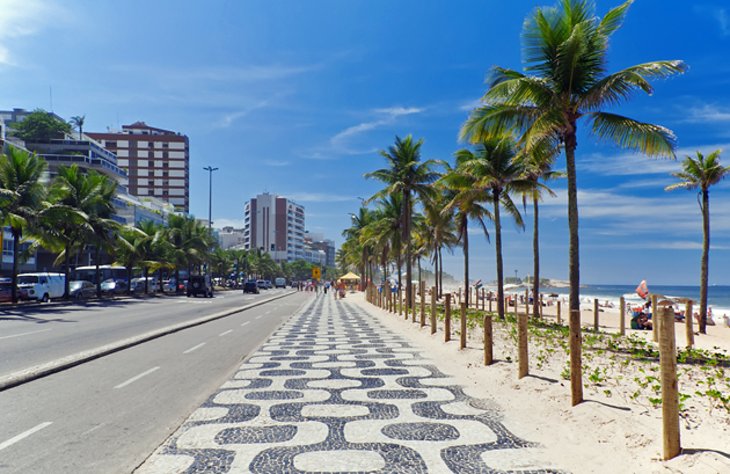
Continuing on westward from Copacabana's four-kilometer strand, the beaches of Ipanema and Leblon are separated by the Jardim de Alá Canal, which drains the lagoon, Lagoa Rodrigo de Freitas. Along the seafront promenade are large hotels, sidewalk cafés, and restaurants.
These two districts, although best known for their beaches (one of which was made world-famous by the song The Girl from Ipanema) have a lively cultural life, with art galleries, cinemas, and an avant-garde theater. Praça de Quental in Leblon is the scene of an antiques market every Sunday, and Praca General Osorio hosts the Sunday Feira de Artesanato de Ipanema featuring crafts, music, art, and local foods.
Carnaval (Carnival)
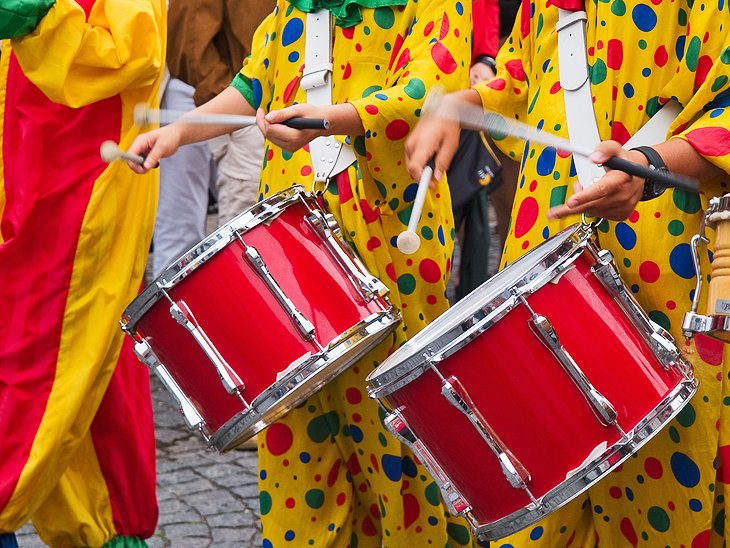
Carnaval is the biggest event of the year on the city's calendar. The festival brings a riot of color and endless action to the streets of Rio each February (sometimes late January, depending on the year). Some visitors plan their entire trip to Brazil around Carnival, and if you are going to attend, you need to do some serious advanced planning.
The celebrations begin shortly after New Year, but the splendor and extravagance reaches its spectacular climax in the four days before Ash Wednesday, attracting hundreds of thousands of spectators to its street parades, samba parties, and shows. Other Brazilian cities celebrate Carnaval; it is also a major tourist event in Bahia and Recife, but Rio's is the most lavish.
The most spectacular events are the parades of the samba schools, which are held in a unique venue designed by renowned Brazilian architect Oscar Niemeyer. The Sambódromo is a long parade route lined by stadium-style boxes designed so that up to 90,000 spectators can watch the parades of brilliantly costumed dancers as they compete. The parade route is 700 meters long and 13 meters wide. It was first used in 1984 and updated as a venue for the 2016 Olympic Games.
Address: Rua Marquês de Sapucaí, Rio de Janeiro
Official site: www.sambadrome.com
Escadaria Selarón (Selaraón Steps)
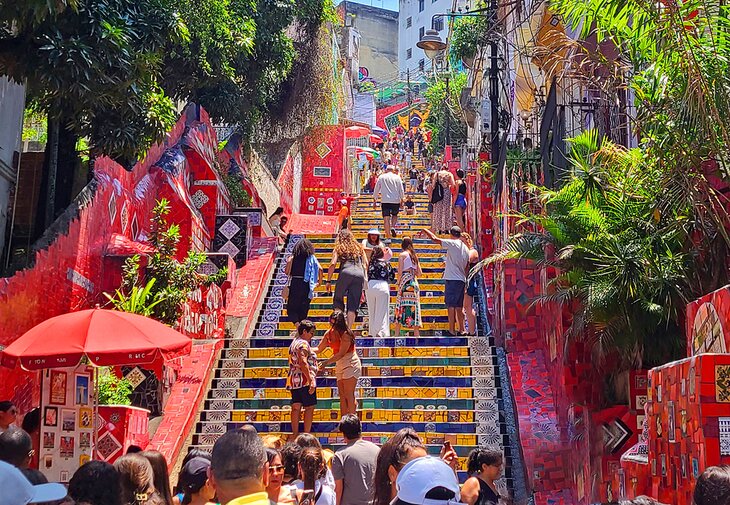
A fun distraction when visiting Rio is the Selaraón Steps. Colorful stairs wind their way up a steep incline, each decorated with an assortment of tiles.
Work on the stairs began in 1983 by Jorge Selearón, who collected tile castoffs and affixed them to the dilapidated staircase running outside his home. Until his suspicious death in 2013, the somewhat eccentric artist kept adding, replacing, and repairing the tiles on stairs in the colors of the Brazilian flag and the tiles on the edges of the staircase in red.
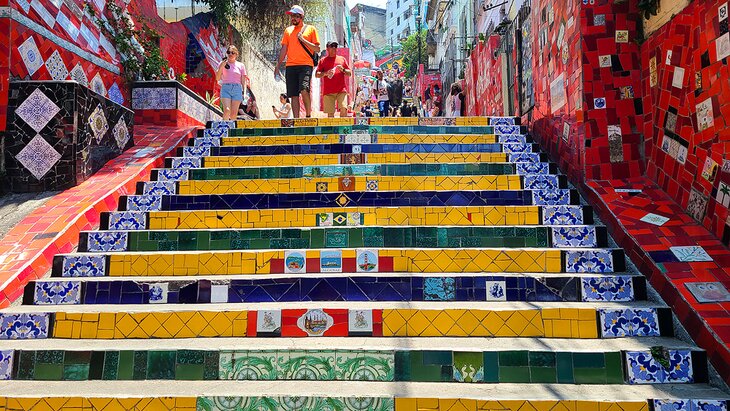
The stairs are exceptionally photogenic and attract large crowds during the day. If you want to get the iconic shot with the staircase name, those tiles are near the bottom of the 125-meter-high staircase. Be sure to walk to the top of the stairs to get a feel for the amount of work Selearón put into this monument.
Small restaurants on shops selling cold beverages line the stairs. A good stop is a small restaurant at the top; it has a shady patio, a bit of a breeze, decent food, is well-priced, and provides good views of the stairs and a bit of downtown Rio.
The area around the stairs is a bit gritty (some call it Bohemian), I wouldn't recommend venturing too far away from the stairs, and I wouldn't come here at night.
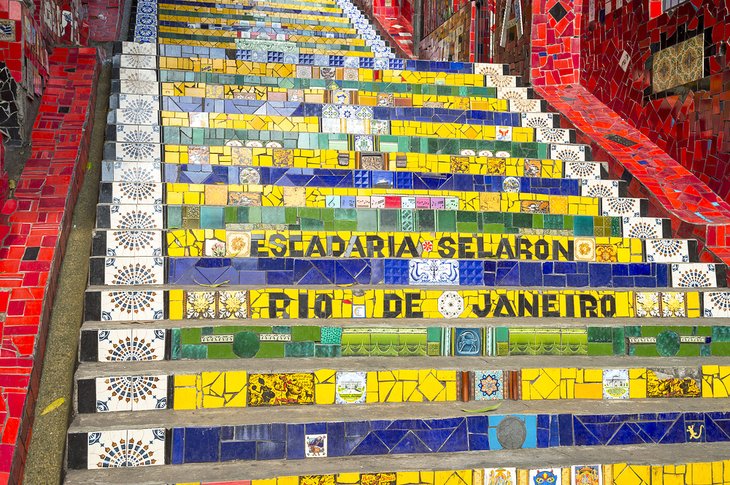
Jardim Botânico (Botanical Garden)
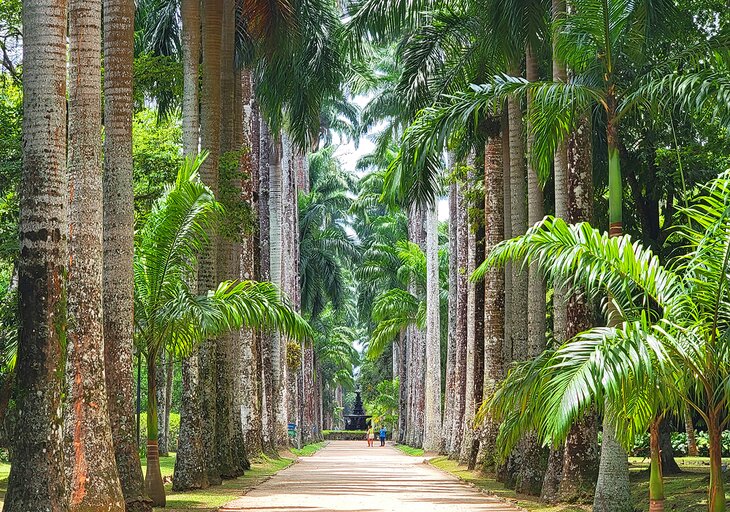
If you've had enough of the urban beat of Rio de Janeiro and crave a bit of nature, take a trip over to the Botanical Gardens. The wide trails under the canopy of green are well-maintained and provide an oasis of calm and a pleasant change from the concrete jungle nearby.
A highlight is Aleia Barbosa Rodrigues, a wonderful wide walkway lined on both sides by towering Royal Palm trees with the famous Fountain of the Muses in the middle. Near the fountain is a giant Kapok tree.
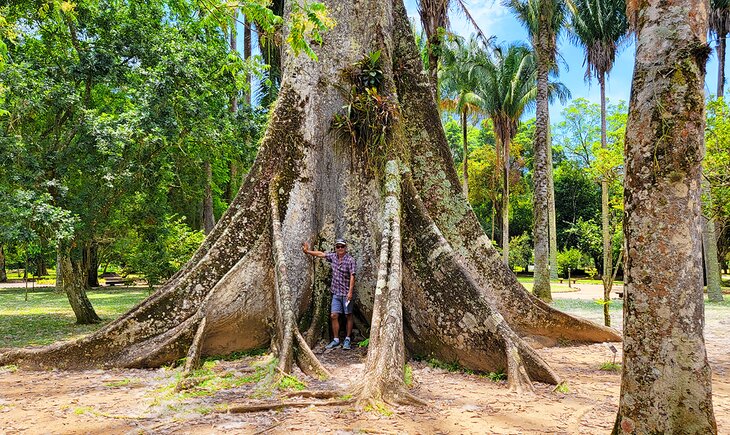
The gardens are a UNESCO World Biosphere site and are home to over 8,000 species of plant life. Trails are well marked in English and be sure to follow the signs to both the Orchidarium, an iron-and-glass greenhouse built in the 1930s, and the Japanese Gardens.
Note that an admission fee is charged to enter and at the time of writing only cash was accepted.
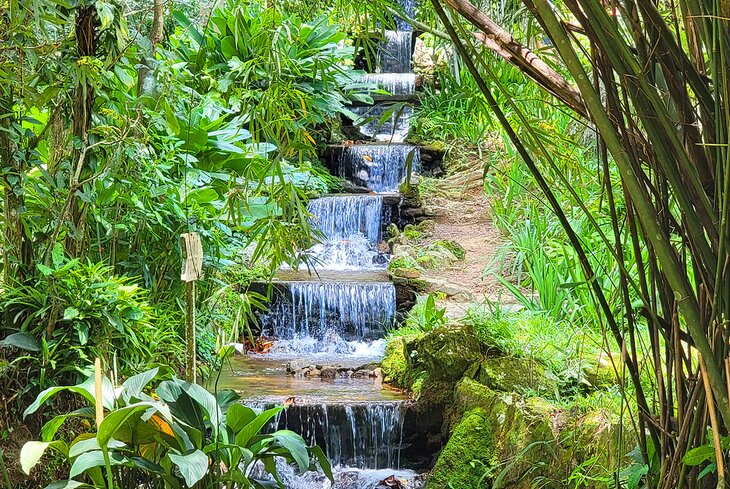
Address: R. Jardim Botânico, Rio de Janeiro
Prainha Beach (Little Beach)
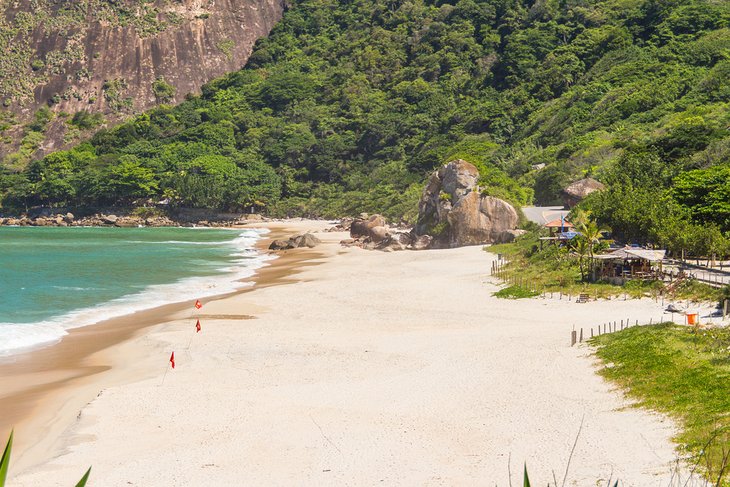
If you have visited the beaches of Copacabana and Ipanema and still crave more, but at the same time are looking for something a bit different, take the 20-kilometer jaunt down to Prainha. Where the rainforest meets the ocean, this beach is more natural than the ones in the heart of Rio.
Golden sands and large round boulders are lapped by the sea, and finding your own patch of sand to soak up the sun is never an issue. If you like to surf, this is the place to do it. Nice right and left breaks provide consistent rides in May, then flatten out until September.
Maracanã
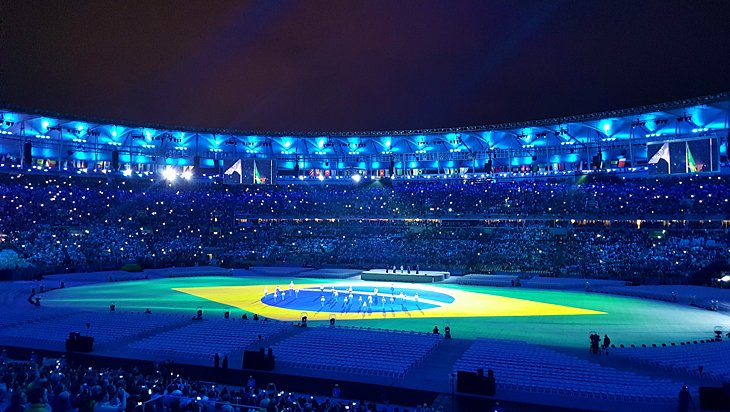
A must-see for football (soccer) fans when a game is scheduled, Brazil's largest stadium was home to the opening and closing ceremonies of the 2016 Summer Olympic Games. It was completely renovated for the FIFA World Cup 2014 and holds more than 78,000 fans.
The stadium is used for matches between Rio's major football clubs, the Flamengo, Botafogo, Fluminense, and Vasco da Gama, as well as for concerts. The brief tour would be of interest to avid fans, but others should give it a miss.
The shore of Lagoa Rodrigo de Freitas, near Copacabana and Ipanema, where many other Olympic events took place, is lined by parks and sports clubs, and its waters are popular for regattas and other water sports.
Address: Av. Pres. Castelo Branco, Rio de Janeiro
São Bento
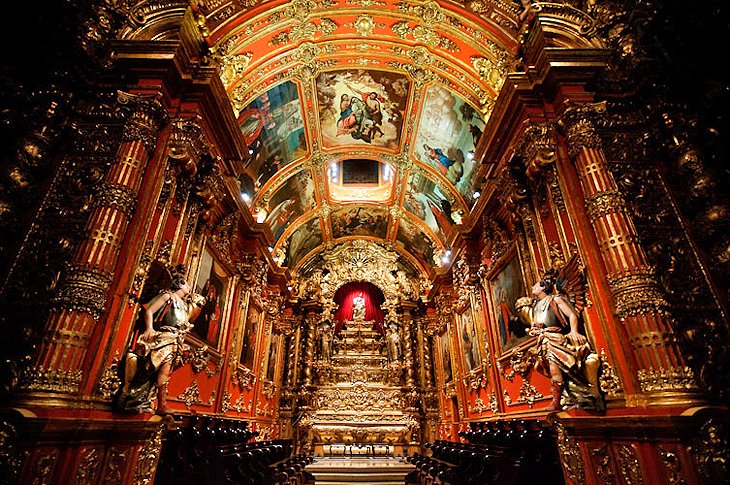
On the hill just above the harbor are the church and monastery of São Bento, one of the finest Benedictine complexes in Brazil. The original 1617 church was without aisles until it was enlarged in the second half of the 17th century by the addition of eight side chapels. The finest artists of the Benedictine order were involved in decorating the interior.
The exuberant carving that covers the walls and ceiling was mainly the work of a monk named Domingos da Conceição, who was also responsible for the figures of St. Benedict and St. Scholastica on the high altar.
The choir chapel has silver work by Mestre Valentim and 14 paintings by Ricardo do Pilar, a monk who was the foremost Benedictine painter of colonial Brazil. His masterpiece, Senhor dos Martírios (Christ of the Passion), is in the sacristy of the monastery.
Tijuca National Park
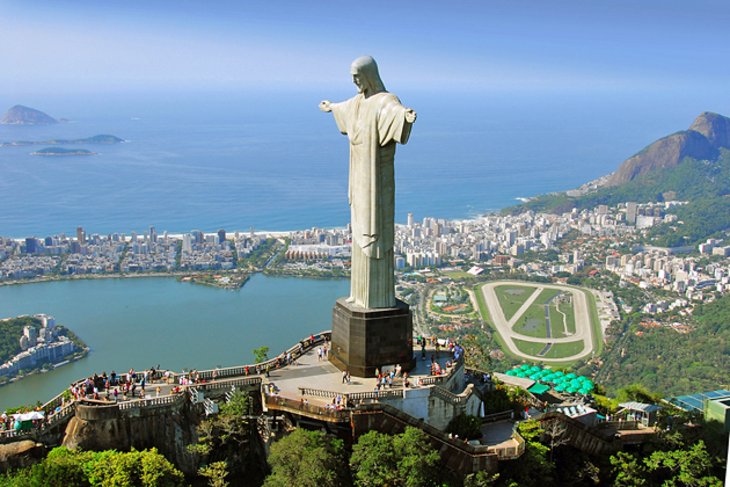
Tijuca National Park protects the Tijuca Forest and several viewpoints overlooking the city, and surrounds Cristo Redentor, the giant-sized statue of Christ on Corcovado. To explore the park, you can leave the train up to Corcovado at a midpoint and follow the road through the forest.
The 3,300-hectare Tijuca Forest, one of the world's largest forests within a city, was planted in the late 1850s on land that had been destroyed by coffee plantations, to safeguard the springs that supplied Rio de Janeiro's water. Most of the trees are native species and provide habitat for Capuchin monkeys, quatis (Brazilian raccoon), colorful toucans, hawks, brilliant blue butterflies, and many other species of wildlife, which you may spot while exploring its trails and roads.
Near the station of the Corcovado railway is Largo do Boticário, one of Rio's most picturesque squares, surrounded by colonial-style houses. From the pagoda-style pavilion at Morro da Vista Chinesa, 380 meters above the shore, are views of the Municipal Park, the Botanic Garden, and a long stretch of the south coast.
There are more views from Mirante Dona Marta, a viewpoint on a spur of rock above Botafogo Bay. Several waterfalls drop from the forest springs, including the 30-meter Cascatinha Taunay.
Set in extensive gardens near the park is the Museu do Açude, with the valuable porcelain collections of the West India Company; old views of Rio de Janeiro by Brazilian and foreign artists; and azulejos, traditional Portuguese tiles from the 17th through 19th centuries.
São Francisco da Penitência
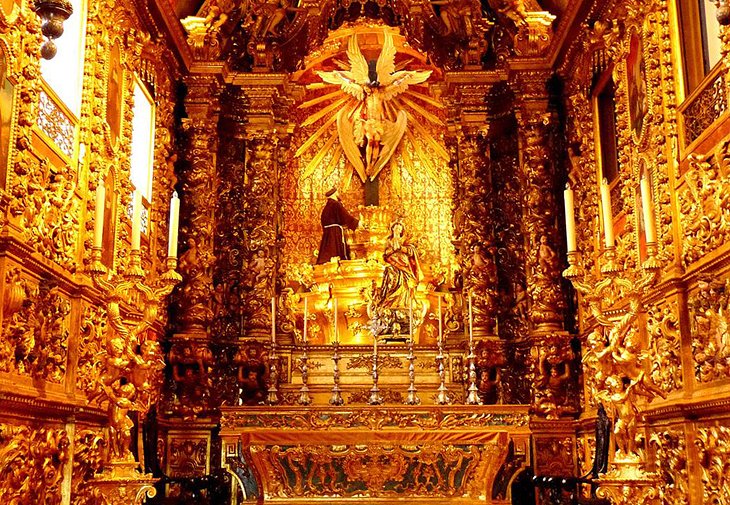
The Igreja da Ordem Terceira de São Francisco da Penitência is divided into three sections with separate entrances, and the simple façade of this church belies the riches within. The interior, which was begun in 1657 and completed in 1773, is a riot of gilded wood carving.
Among those who contributed to the decoration of the interior were Manuel and Francisco Xavier de Brito, two leading Portuguese sculptors and woodcarvers. They had very similar styles, known as Brito, using decorative forms that influenced Aleijadinho and other masters of Brazilian Baroque.
The ceiling of the choir has the earliest trompe-l'oeil painting in Brazil, completed in 1736, the work of Caetano da Costa Coelho, who later painted the ceiling of the nave in the same style.
Address: Rua da Carioca, Rio de Janeiro
Teatro Municipal (Municipal Theater)
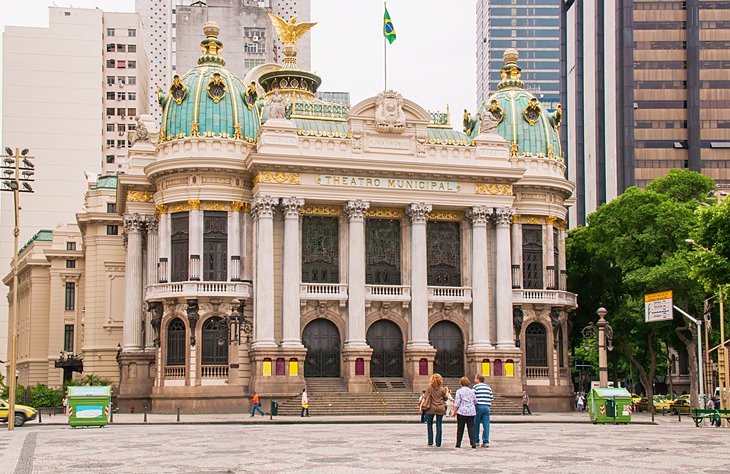
The grand Municipal Theater, built in the early 20th century, was inspired by the Paris Opera of Charles Garnier, and its interior is even more ornate and luxurious than the dramatic towered façade. Important highlights to see are the sculptures by Henrique Bernardelli and paintings by Rodolfo Amoedo and Eliseu Visconti, as well as the drop curtain, the proscenium frieze, and the ceilings.
Guided tours, some in English, are available or, better yet, attend a classical concert or ballet performance here.
Address: Praça Floriano, Rio de Janeiro
Quinta da Boa Vista
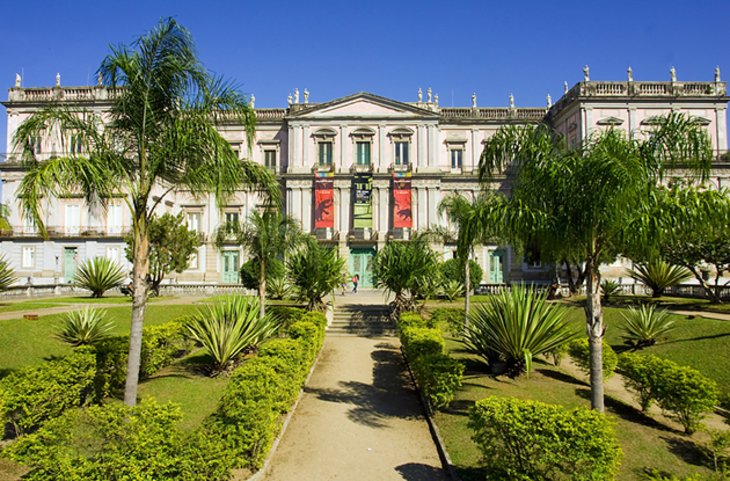
The gardens, villas, and imperial palaces of São Cristóvão are now public parks and museums, the foremost of which is Quinta da Boa Vista. From 1808 to 1889, the palace was the residence of the royal and the imperial family and was later altered and rebuilt as the Palácio de São Cristóvão. It houses the National Museum, which has the largest zoological, botanical, ethnographic, and archaeology collections in the country, totaling more than a million items.
In the expansive park are gardens with lakes, woodlands, and caves, which you can reach via a miniature railway. Also inside the park is a zoo with more than 2,000 species of mammals, birds, and reptiles from Brazil and around the world.
Address: São Cristóvão, Rio de Janeiro
Nossa Senhora do Carmo and Monte do Carmo
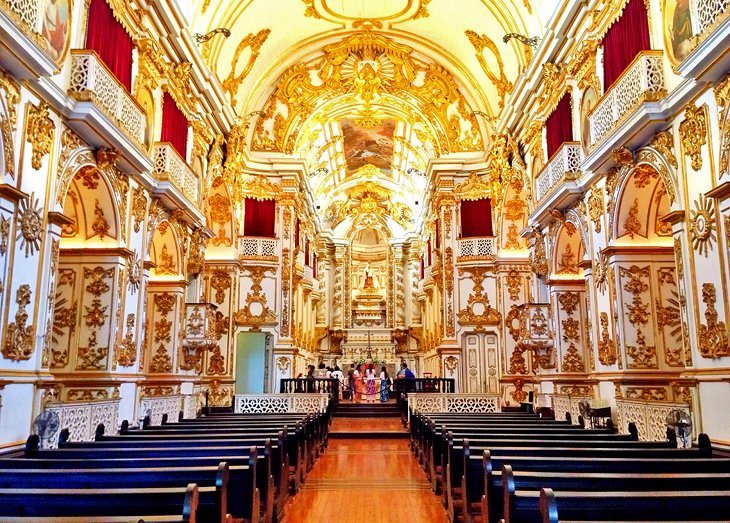
The parish church of Nossa Senhora do Carmo was the Capela Real (Royal Chapel) from 1808 to 1889 and the cathedral until the modern one replaced it in 1976. Connected to it by a passage is a second Carmelite church, Monte do Carmo, begun in 1755.
Highlights are its Baroque façade, stone doorway, and the white and gold carving by Mestre Valentim in the Chapel of the Novitiate. The 1761 former cathedral is richly decorated with carving and has a silver high altar. In a side street is the chapel of Nossa Senhora do Cabo da Boa Esperança (Our Lady of the Cape of Good Hope), the last surviving street oratory in the city.
Address: Rua 1 de Maráo (off Rua do Ouvidor), Rio de Janeiro
Ilha Fiscal
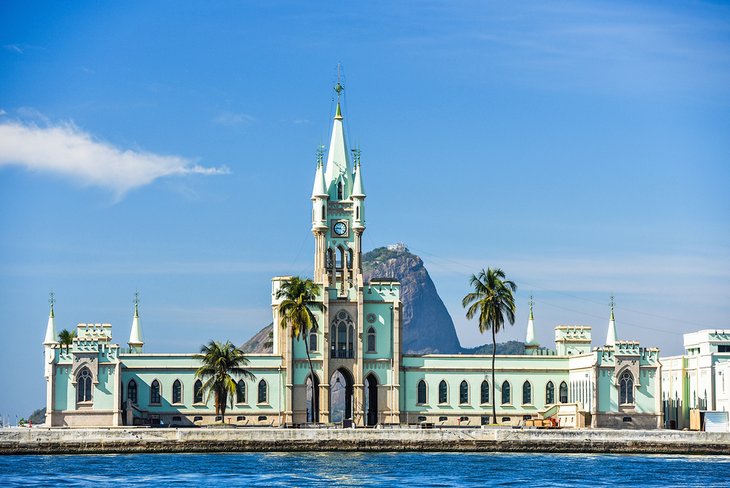
This neo-Gothic castle in Rio de Janeiro's harbor was built in 1889 and used for many years as a customs inspection building. Today this architectural gem, complete with turrets and towers, is open to the public.
Inside Ilha Fiscal, you'll find smooth hardwood floors with mosaic patterns throughout, while impressive stained-glass windows glow in Rio's tropical sun. As you wander around, take a stroll through the museum that showcases Brazilian naval history.
Access to the island is generally by boat, which passes some spectacular scenery along the way including colonial architecture on Ilha das Cobras and the skyline of downtown Rio. The ride is about 20 minutes.
Prior to departure, you are welcome to wander around and check out some military hardware including a helicopter, tank, and a submarine which you can go inside. Buying tickets can be done in person but it's best to purchase them in advance online at the official website where you can select the date and time of your tour.
Catedral de São Sebastião
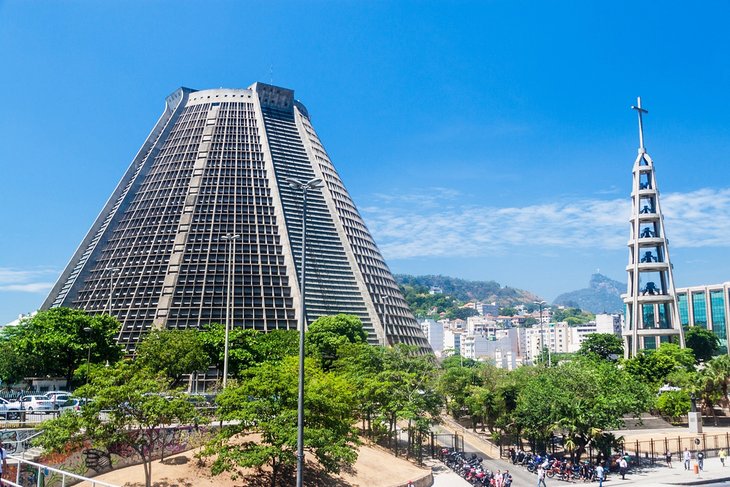
Architect Edgar Fonseca, who designed Rio's Catedral de São Sebastião, took his inspiration from Mayan pyramids, interpreting their soaring forms in a modern context. Built between 1964 and 1979 and often referred to as the New Cathedral to distinguish it from its immediate predecessor, Nossa Senhora do Carmo, the church seats 5,000 in its 96-meter interior. Four stained glass windows rise 64 meters from the floor to light the interior with brilliantly colored natural light. At night, the church is lit from within, a bright beacon in the central skyline.
If you are visiting the Selaraón Steps, the church is visible from the restaurant at the top of the staircase, just look off to your left.
Address: Av. Chile 245, Rio de Janeiro
Take a Boat Trip to Ilha de Paquetá
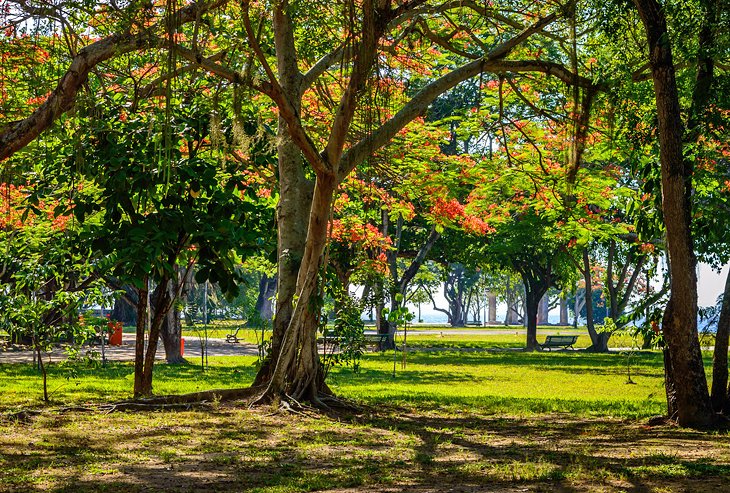
The island of Paquetá, with an area of a little more than a square kilometer, lies in Guanabara Bay, an hour's boat trip from Praça 15 de Novembro. It became a fashionable resort in the early 1800s, when Portuguese Emperor Dom João VI spent his summers here (the colony of Brazil became the seat of the Portuguese Empire in 1808, when Napoleon's armies occupied Portugal).
Solar del Rey, a palace in which Dom João VI frequently stayed, is among the interesting old buildings, which also include the 1698 chapel of São Roque and the house of José Bonifácio de Andrada e Silva, father of Brazilian independence. No cars invade the peace of the island, but you can explore it on foot, by rented bicycle, or in a horse-drawn carriage. Palms line the island's beaches, where you'll find impromptu food stands grilling fresh fish.
Day Trip to Petrópolis
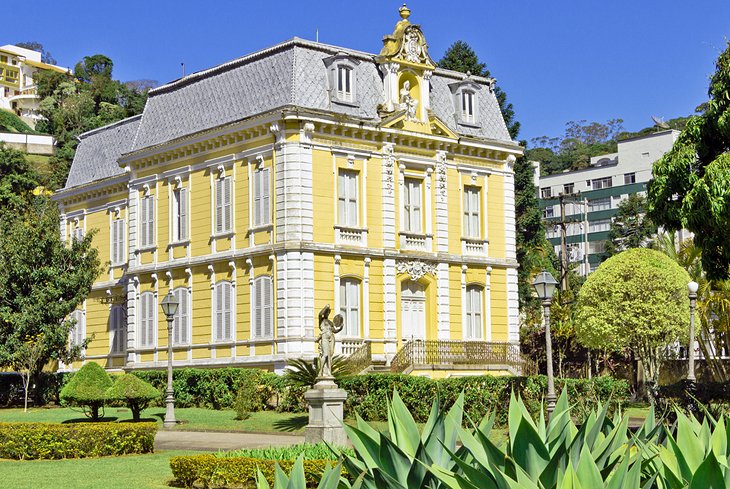
Petrópolis, 68 kilometers from Rio de Janeiro, sits high in a forested valley of the Serra dos Órgãos and was chosen by King Pedro II of Brazil as his summer home. Aristocrats quickly followed, building their own summer palaces and villas and making Petrópolis an elegant upper-class resort.
It was later a favorite of artists and intellectuals and a popular tourist destination for its beautiful buildings and pleasant year-round climate. Today, the former Summer Palace is the Imperial Museum, filled with memorabilia from the days of the Brazilian Empire. Also worth seeing are the Cathedral of Saint Peter of Alcântara, the Crystal Palace, and the house of aviation pioneer Santos-Dumont.
Map of Tourist Attractions in Rio de Janeiro
Rio de Janeiro, Brazil - Climate Chart
| Average minimum and maximum temperatures for Rio de Janeiro, Brazil in °C | |||||||||||
| J | F | M | A | M | J | J | A | S | O | N | D |
| 29 23 | 30 23 | 29 23 | 28 22 | 27 21 | 25 19 | 26 18 | 26 19 | 25 19 | 26 20 | 27 22 | 29 22 |
| PlanetWare.com | |||||||||||
| Average monthly precipitation totals for Rio de Janeiro, Brazil in mm. | |||||||||||
| 114 | 104 | 104 | 137 | 86 | 81 | 56 | 51 | 86 | 89 | 97 | 170 |
| Average minimum and maximum temperatures for Rio de Janeiro, Brazil in °F | |||||||||||
| J | F | M | A | M | J | J | A | S | O | N | D |
| 85 74 | 86 74 | 85 74 | 82 71 | 80 69 | 77 66 | 78 65 | 78 66 | 77 67 | 79 68 | 81 71 | 84 72 |
| PlanetWare.com | |||||||||||
| Average monthly precipitation totals for Rio de Janeiro, Brazil in inches. | |||||||||||
| 4.5 | 4.1 | 4.1 | 5.4 | 3.4 | 3.2 | 2.2 | 2.0 | 3.4 | 3.5 | 3.8 | 6.7 |
